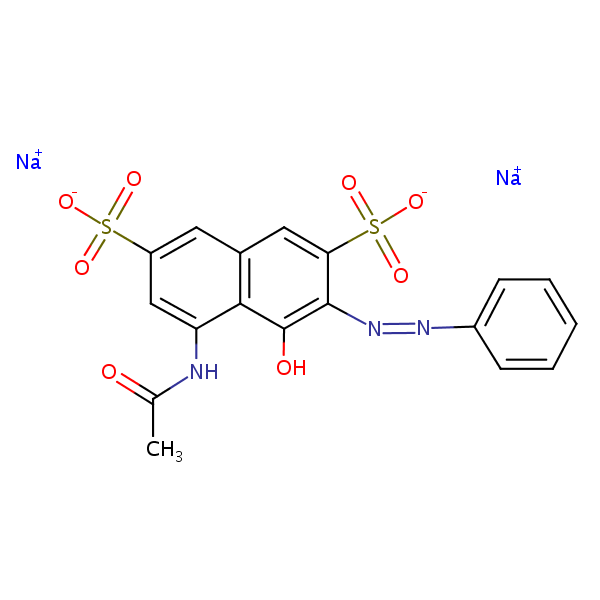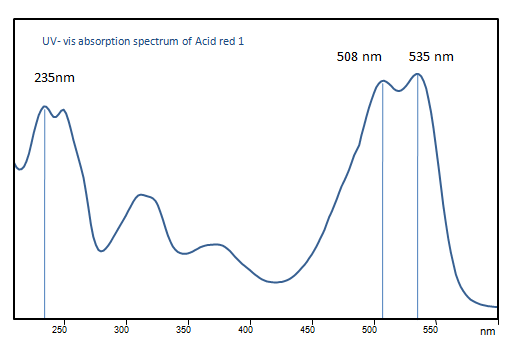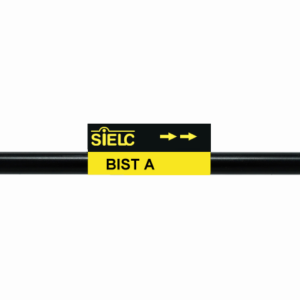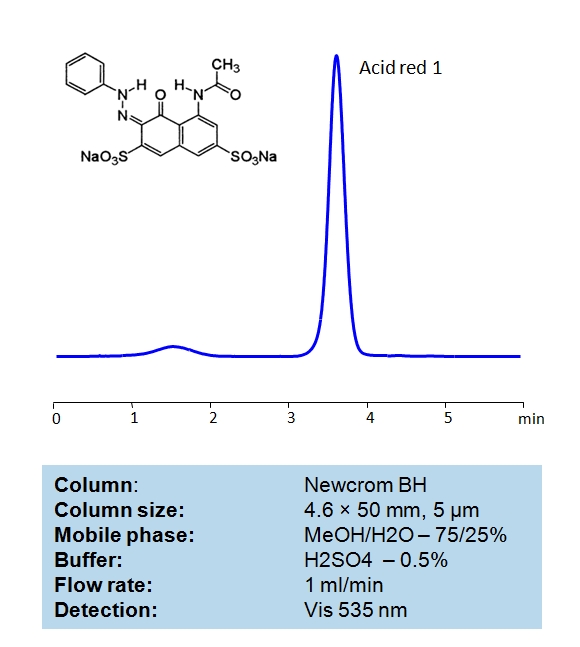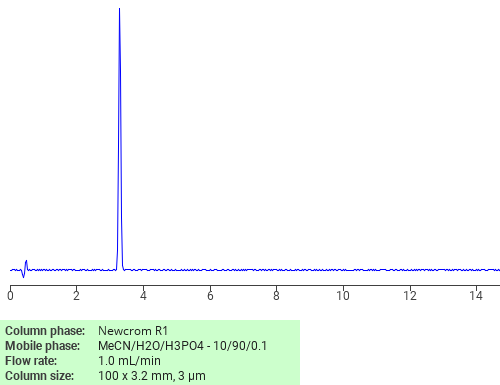| CAS Number | 3734-67-6 |
|---|---|
| Molecular Formula | C18H13N3Na2O8S2 |
| Molecular Weight | 509.411 |
| InChI Key | WXLFIFHRGFOVCD-UHFFFAOYSA-L |
| LogP | -0.277 |
| Synonyms |
|
Applications:
HPLC Method for Analysis of Acid Red 1 on BIST A Column
December 1, 2022
HPLC Method for Analysis of C.I. Acid Red 1 on BIST A Column by SIELC Technologies
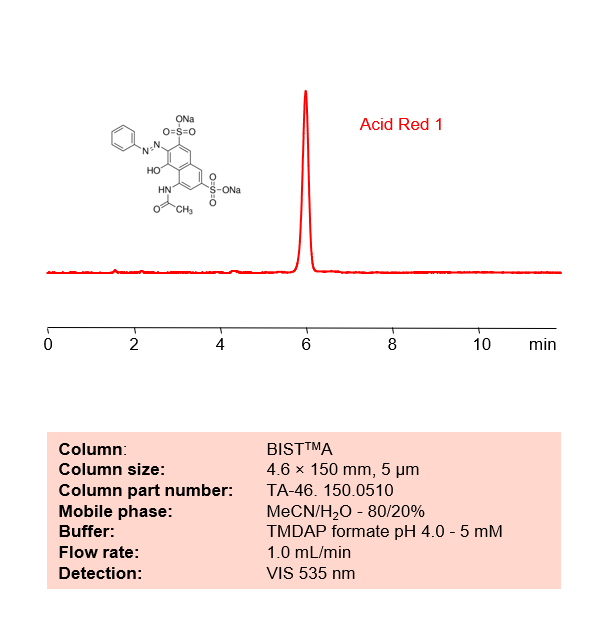
Acid Red 1, also known as Red 2G, is a popular red synthetic dye used in a wide variety of food products with the chemical formula C18H13N3Na2O8S2. It is banned for food use in Australia, Canada, Japan, Norway, Malaysia, and Israel due to being an potential carcinogen. In certain European countries, it is heavily restricted. Outside of use, it is used in inks and in histology.
Using SIELC’s newly introduced BIST™ method, C.I. Acid Red 1, which ionizes in water, can be retained on a negatively-charged, cation-exchange BIST A column. There are two keys to this retention method: 1) a multi-charged, positive buffer, such as N,N,N’,N’-Tetramethyl-1,3-propanediamine (TMDAP), which acts as a bridge, linking the negatively-charged Acid Red 1 analytes to the negatively-charged column surface and 2) a mobile phase consisting mostly of organic solvent (such as MeCN) to minimize the formation of a solvation layer around the charged analytes. The effect of reducing the solvation layer by increasing the organic component concentration in the mobile phase can be clearly seen above. Using this new and unique analysis method, Acid Red 1 can be retained and UV detected at 270 nm.
Condition
| Column | BIST A, 4.6 x 150 mm, 5 µm, 100 A, dual ended |
| Mobile Phase | MeCN – 80/20% |
| Buffer | TMDAP formate pH 4.0 – 5,0 mM |
| Flow Rate | 1.0 ml/min |
| Detection | Vis 535 nm |
Description
| Class of Compounds | Acid, Dye |
| Analyzing Compounds | C.I. Acid Red 1 |
Application Column
BIST A
Column Diameter: 4.6 mm
Column Length: 150 mm
Particle Size: 5 µm
Pore Size: 100 A
Column options: dual ended

HPLC Determination of Acid red 1 on Newcrom BH Column
July 2, 2020
HPLC Method for C.I. Acid Red 1 on Newcrom BH by SIELC Technologies
High Performance Liquid Chromatography (HPLC) Method for Analysis of C.I. Acid Red 1.
Acid Red 1, also known as Red 2G, is a synthetic dye that’s used as a food additive. It has been banned in several countries due to safety concerns because it forms aniline in the body that can interfere with the function of hemoglobin. Acid Red 1 can be retained on HPLC mixed-mode Newcrom BH column using a mobile phase consisting of methanol (MeOH) and water with sulfuric acid (H2SO) buffer. Vis detection at 535nm.
| Column | Newcrom BH, 4.6 x 50 mm, 5 µm, 100 A, dual ended |
| Mobile Phase | MeOH/H2O – 75/25% |
| Buffer | H2SO4 – 0.5% |
| Flow Rate | 1.0 ml/min |
| Detection | Vis 535 nm |
| Class of Compounds | Acid, Dyes |
| Analyzing Compounds | C.I. Acid Red 1 |
Application Column
Newcrom BH
Column Diameter: 4.6 mm
Column Length: 50 mm
Particle Size: 5 µm
Pore Size: 100 A
Column options: dual ended

Separation of C.I. Acid Red 1 on Newcrom R1 HPLC column
May 16, 2018
C.I. Acid Red 1 can be analyzed by this reverse phase (RP) HPLC method with simple conditions. The mobile phase contains an acetonitrile (MeCN), water, and phosphoric acid. For Mass-Spec (MS) compatible applications the phosphoric acid needs to be replaced with formic acid. Smaller 3 µm particles columns available for fast UPLC applications. This liquid chromatography method is scalable and can be used for isolation impurities in preparative separation. It also suitable for pharmacokinetics.
Application Column
Newcrom R1
The Newcrom columns are a family of reverse-phase-based columns. Newcrom A, AH, B, and BH are all mixed-mode columns with either positive or negative ion-pairing groups attached to either short (25 Å) or long (100 Å) ligand chains. Newcrom R1 is a special reverse-phase column with low silanol activity.
Select options